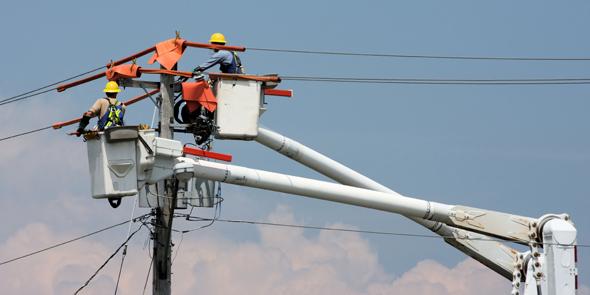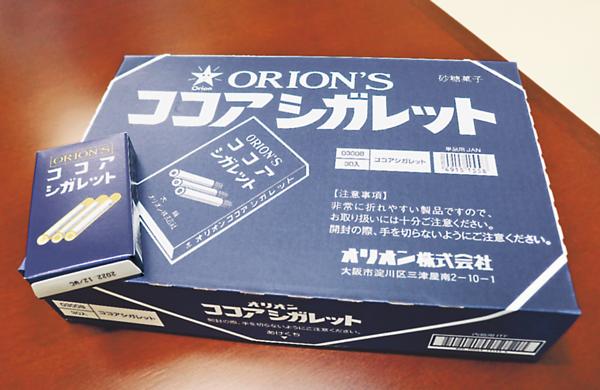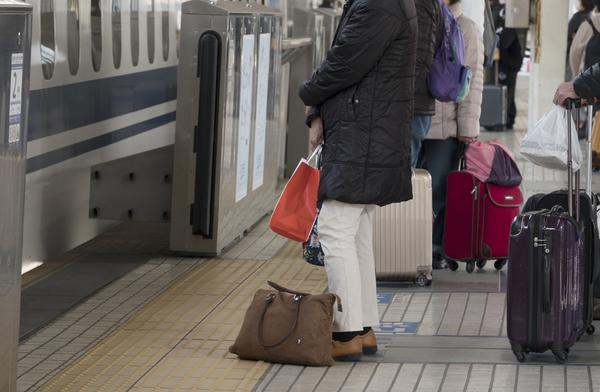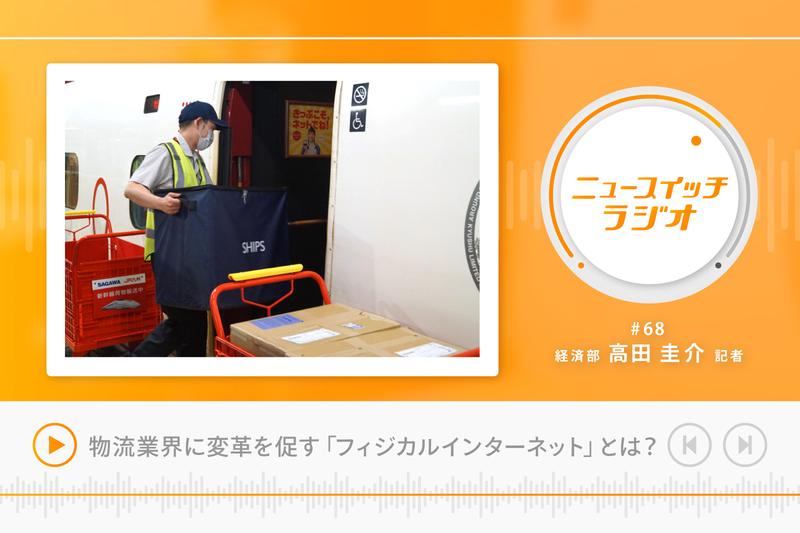The way people work has changed dramatically due to the corona crisis. Companies are promoting work style reforms to ensure the safety of their employees, and work from home and web conferencing are becoming part of everyday business. Furthermore, in anticipation of the post-corona era, hybrid work, which actively selects a place to work with high productivity according to the work content, such as an office, home, or shared office, is also attracting attention.
The premise for this is the mobile network that people use every day. According to the Ministry of Internal Affairs and Communications, Japan's mobile phone network covers more than 99% of the population. Is going. New ways of working have spread all at once in the wake of the corona crisis, but it can also be said that the underlying environment was already in place.
On the other hand, recent changes in work styles are dependent on mobile networks based on mobile phone networks, and there are many working environments left behind. For example, Japan is one of the world's most forested countries, with two-thirds of its land area covered by forests, and it is said that the coverage rate of mobile phone networks, including uninhabited areas, is less than 70%. Workers involved in developing mountainous areas and laying railroads, forestry workers and environmental researchers are therefore exempt.
In particular, workers working in mountainous areas, especially lone workers who are active in a wide area, face the problem that when an occupational accident occurs, it is easy to be late in discovering it. There is no end to the number of cases in which accidents, such as distress, falls, and self-injury caused by logging equipment due to bad weather, which could have been mild if contacted immediately, have become serious due to delays in discovery, leading to fatal accidents.
For the sustainable development of these industries, it is essential to consider how to prepare the working environment itself, as well as securing new workers and training young people to solve the labor shortage. How to ensure the safety of workers working outside the coverage area of the mobile phone network, so to speak, where the "modern lifeline" can not reach - That is why satellite communication and GPS location information provided by Globalstar are attracting attention. It is a satellite IoT solution that utilizes
32 Globalstar satellites orbiting at an altitude of 1414 km acquired the GPS position information of the SPOT series. The user's location information is sent to the server via Globalstar's earth station, and the user's location is identified with a PC or smartphone. The "SPOT" series, which is used around the world as a model, is equipped with a S.O.S button as standard to contact the International Emergency Response Agency in case of emergency, and since the service started in 2007, more than 8,100 people have been rescued by this rescue request. said to have been involved. Here, we will introduce examples of overseas use, focusing on the latest model "SPOT Gen4".Remote line worker for a power transmission company working in a large forest in California
The first is a case of a power transmission company that operates in the United States and Canada. The company works with two energy providers in California to inspect and maintain remote power lines and poles. One worker inspects 35 to 50 locations a day. Since the location where the inspection is conducted is in a remote area, there are not only risks such as heat stroke when acting alone, but also dangerous animals such as bears. That's when I turned to Globalstar's satellite IoT solution.

The company has introduced 300 units of the SPOT series connected to a real-time GPS mapping platform, and has also developed a dedicated training program for learning terminal operations. The workers were repeatedly trained. When traveling to remote inspections, they carried SPOT with them and used the device's check-in feature to send their status to safety supervisors.
This safety measure was effective immediately. One day, when a worker moving to an inspection site became unable to move due to dehydration due to extreme heat, an S.O.S. signal was sent to the emergency response agency via satellite communication, and the search and rescue service successfully rescued the worker safely.
As mentioned at the beginning, how to protect the safety and health of employees in a rapidly changing social environment is one of the unavoidable management issues for companies, but this involves working in a dangerous zone. A lone worker is no exception. Safety supervisors and operations department managers of Japanese companies who face similar challenges should find the company's use cases very helpful.
Provide an environment where workers working in the resource sector can communicate in real time anywhere
The next example is Ridgeline Canada Inc., which operates in western Canada, which is rich in nature. The company provides environmental solutions such as maintenance, emergency response and waste management to companies in the resources sector that supply oil, natural gas, mining and power. Naturally, the work spans areas where mobile networks do not reach, so it was necessary to create an environment where real-time communication could be performed anywhere to reduce the risk of service interruptions to infrastructure providers.
Therefore, we installed a SPOT terminal for on-site employees and introduced a mechanism to use the check-in function to convey the location information of on-site workers to the head office manager. Using the tracking mode, it was possible to grasp the location information of the worker at preset intervals. In addition, on the web browser-based SPOT mapping that allows you to view the location information of SPOT terminals from PCs, smartphones, tablets, etc., it is said that it is managed with different colors so that you can immediately understand who is where.
"SPOT is simple to operate. With the push of a button, it protects the welfare of employees and ensures that someone is always 'there'. It's already indispensable to the team," said Ridgeline. Canada's safety management department manager said.
Globalstar satellite IoT solution, which is also active in mineral exploration and firefighting activities
Location information solutions using SPOT terminals for mineral exploration companies operating mining businesses in Canada, and Spain's Andalusia fire department organization, etc. is active.
The former often work in places far beyond the range of mobile phones, heading to the destination by truck for mineral surveys, and then using snowmobiles to investigate the site. Therefore, it is said that the route surveyed by the SPOT terminal is mapped with GPS to ensure the backup of the survey and the safety of the workers, and the operator can also accurately grasp where the workers are.
On the other hand, INFOCA, an administrative agency that responds to forest fires in Andalusia, a vast province in southern Spain, and requires about 5,000 response personnel, has a wide range of trust to protect the safety of firefighters from the risk of the new corona. It was necessary to introduce a highly efficient tracking system, and as a solution, 550 SPOT terminals were introduced.
As a result, just by pressing the S.O.S button on the SPOT terminal, an alert will be displayed to the fire department organization, and a system has been put in place to monitor the location of the local fire brigade and vehicles through satellite communication. In the event of a fire, information such as how far related resources, such as firefighters and firefighting vehicles, are from the fire scene is particularly important. "The ability to track all of the firefighters and the resources they use in real-time is at the heart of fire management," INFOCA said.
Weighing about 142g, the SPOT Gen4 is powered by 4 lithium batteries and can be carried anywhere. Equipped with a check-in function that sends your own location information with a single button and an emergency S.O.S function as standard.As mentioned above, the Globalstar satellite IoT solution is used to ensure the safety of employees working in areas outside mobile phone coverage. I have introduced advanced cases overseas. In Japan, too, the idea of “well-being”, which considers the working environment of employees, is spreading with the aim of resolving the labor shortage and improving corporate value. It goes without saying that ensuring the safety of employees is a corporate responsibility, but the value provided by Globalstar satellite IoT solutions will continue to increase in the future to protect lone workers working in dangerous areas.






![[New Toyota Voxy (90 series)] Amplifies the characteristics of the aero body! A design that further enhances the power of the front mask! #Works direct custom deep layer 001](https://website-google-hk.oss-cn-hongkong.aliyuncs.com/drawing/article_results_9/2022/3/25/01568e2fbf021c0eaf7d013507c850a4_0.jpeg)

![[Toyota Noah / Voxy new model] Modellista releases various customized parts ... Actual vehicle exhibited at Tokyo Auto Salon](https://website-google-hk.oss-cn-hongkong.aliyuncs.com/drawing/article_results_9/2022/3/25/8268612c1e5941e62d3dfd07f8991b2f_0.jpeg)
